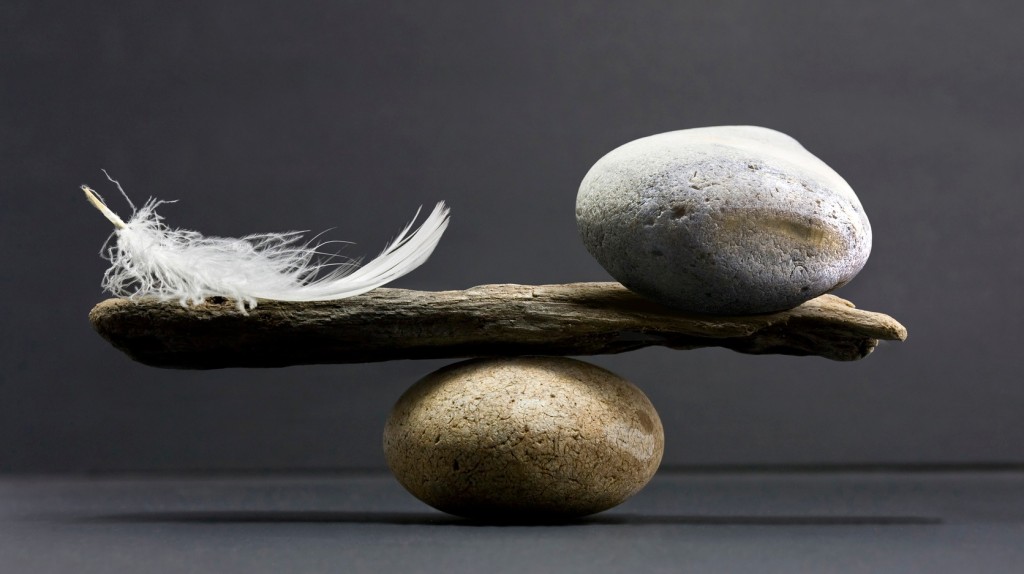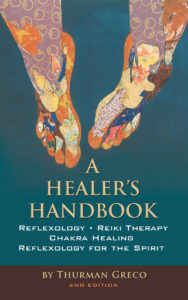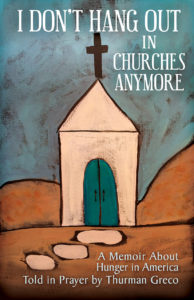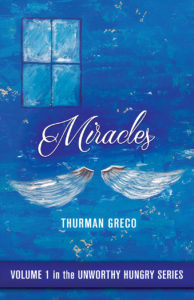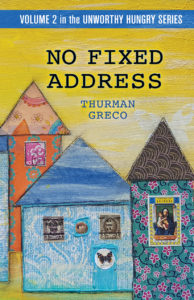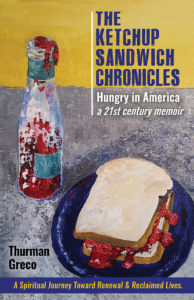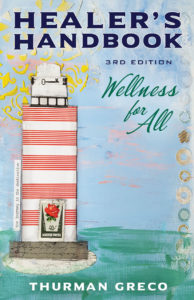Buyer Beware – 6 Things to Know About Eating Better
In another time I lived in the interior of Venezuela – 50 miles from headhunters in 1 direction and 50 miles from a grocery store in another direction.
Milk for my family was delivered weekly by a Spaniard who owned an area dairy. I got to know him and his cows very well. It wasn’t that I considered him to be so interesting or entertaining. I was afraid of getting milk infected with tuberculosis. I had 2 toddlers and I was doing everything I could to keep them healthy.
Most of us, when asked, will admit to eating a nearly perfect diet. Delve deeper, and you’ll find that everyone’s diet is different. You’ll also find many of the diets are not healthy…some are not even safe.
It’s hard to know which is the correct diet. There are thousands out there. Many are touted as being the best. We can go into a large book store or library and find an extremely generous selection of cookbooks, each promoting a different way of eating. Top off that with the TV Food channels and the internet and everything becomes confusing.
So, what do you do as a reflexologist when your client partner begins to discuss diet or ask questions about digestion issues?
I offer a few sane suggestions for your own diet as well as that of your client partners, friends, neighbors, and anyone else trying to eat better:
Eat whole foods that are fresh and locally grown. I realize that you may have heard/read this before but I offer new twists on the same old sentence.
Eating locally grown food is important. It’s important to not only know that the food is locally grown, but it’s important to know which farm the food came from.
Can you afford a CSA? If your household is too small, split a membership.
Eating locally grown or raised foods includes
fresh vegetables
fresh fruits
whole grains
beans
fish
lean red meat
dairy products.
When you eat whole, fresh, locally grown foods, you’ll be eating food which experiences less processing, packaging, and shipping.
Foods grown in your area can be picked later, and eaten sooner. Overall, this means a better product.
When I think of fresh foods, I think of health promotion. It’s much better to eat an apple from nearby than to eat pears, apples, strawberries or whatever from South America or China.
And, if you know the farm this food comes from, you’re even better off because you’ll know about the pesticides used. You’ll never be able to learn what pesticides were used on food that came from Chile or China, or any other foreign location, no matter what the label tells you. Our government sends few to no inspectors to faraway places to verify what they say they do.
When you eat whole, fresh, locally grown foods, you’ll be eating better quality food offering the opportunity to protect your heart, stabilize your blood sugar, boost your brainpower, and generally improve your health.
Farmers shipping their products long distances focus on growing foods that travel well as opposed to products that taste better.
Begin your quest for locally grown food at a farmers market.
Don’t be shy. Ask your grocery store produce manager where the food comes from. It goes without saying that we need pure foods if we can get them. Organic, non-GMO, etc., are important.
At the very least, buy organic when you can. Here again, it helps to know which farm the food comes from. The term “organic” doesn’t mean what it did in times past. Many farmers claim to sell organic foods today that could not make that claim in the past. This is because the government has relaxed the organic designation guidelines.
If you’re on a budget, it’s important for some foods to be organic. Foods needing to be organic include:
apples
bell peppers
celery
chard
cherries
domestic blueberries
imported grapes
kale
lettuce
nectarines
peaches
potatoes
spinach
strawberries
Foods that do not necessarily need to be eaten in the organic state include:
asparagus
avocados
cabbage
cantaloupe
eggplant
grapefruit
kiwi
mango
onions
pineapple
sweet corn
sweet onions
sweet peas
sweet potatoes
watermelon
We eat many foods over time. I’ve only listed a very few items. However, the 2 lists offer insight into what constitutes a food needing to be organic and a food that may not.
Staying away from boxed and canned foods is important. They are often filled with additives which are not good for the human body. Many boxed and canned items aren’t even foods. They’re products which have been manufactured to eat. In the 21st century, just because something is sold in a food store to eat doesn’t mean it’s a food.
Food shopping in today’s world not only involves selecting items which are foods – whole, fresh, and local – but also being careful where you buy these items. Just because a store claims to be health oriented doesn’t mean that everything it sells is nutritious or even safe.
Approach each item with a questioning attitude. Read the label. If there are a lot of words which are hard to pronounce, return the item to the shelf.
Your grocer is in business to make $$$. Food is put on the shelves to sell. Just because it’s on the shelves doesn’t guarantee that it’s healthy or even safe.
This doesn’t mean that eating can’t be fun. It can be. It’ll be even more fun once you know exactly what you’re eating.
If you can, buy your breads from a local bakery which uses organic whole grains.
Become knowledgeable about your dairy, meat, and fish products. If at all possible, stay away from fish that are farmed.
If you eat meat, eggs, cheese, try to get products coming from animals that are free range, organic fed.
Purchase eggs coming from cage free hens.
Ham, bacon, and smoked fish should have no synthetic nitrates or nitrites.
Meats should be hormone free, free range grazed, and antibiotic free.
I realize that not everyone has access to these foods. We can’t eat what we don’t have access to. I also realize that these foods may be expensive. We also can’t eat what we can’t buy. Everyone faces choices when it comes to food shopping. Staying away from processed foods can free up some funds for fresh, whole, local.
It’s okay to be a food snob only wanting the most nutritious, healthiest food available.
Thanks for reading this blogged book.
Please refer this post to your preferred social media network.
I hope you found this article helpful. Please leave your comments below and check out the other posts.
Don’t forget to join the email list.
Other blogs you may enjoy:
Peace and food for all
Thurman Greco
9 Important Questions to Ask About Pain
 Ubiquitous, pain. Everyone suffers with pain occasionally. Some of us suffer with pain constantly.
Ubiquitous, pain. Everyone suffers with pain occasionally. Some of us suffer with pain constantly.
Pain comes in many forms:
Pins and needles
Searing
Hot
Cold
Constant
Deep
Screaming.
Everyone has names for pain.
Reflexologists, whenever a client partner begins to discuss pain with you, ask the following questions:
How long have you had this pain?
If your pain is not constant, does it come and go on a certain or random schedule?
Do particular activities initiate the pain?
What does it feel like?
Does it have a shape?
What does it look like?
What does it sound like?
What does it smell like?
Is there a story connected to this pain? Do you know it?
Is there a word that will help you heal?
Now, speak to your pain.
Ask your pain if you can work together to heal.
Is there a word to help you heal? Pause a moment to receive this word.
Then, find out what color this word is going to be. Now, repeat this word several times as you experience the color bringing relaxation to your entire being.
As you experience this, know that relaxation is important to pain because when we relax, we heal.
Often, just going through the above questions offers relief. Sometimes we have pain which has a past life origin. These questions can help reveal this situation. People who have tried everything with no luck are able to have breakthroughs.
But, even if the questions don’t seem to offer immediate insight, they are very powerful and are quite helpful.
Reflexology can be a powerful pain management tool if used in the right way. In the near future, I’ll be offering a series of posts sharing pain management sessions.
Thank you for reading this blog/book.
Please share this article with your preferred social media network.
Please leave a comment.
Don’t forget to join the email list.
Media provided by Renee Ruwe
Peace and food for all.
Thurman Greco
7 Ways to be Light, Vibrant, Joyful
 .Surround yourself with things, people who make you feel light, vibrant, and joyful.
.Surround yourself with things, people who make you feel light, vibrant, and joyful.
This can be a variety of things. For some, this can be
colors,
music,
books,
plants.
But, whatever it is, surround yourself with things that make you feel great, good, vibrant, joyful.
You may find yourself painting your walls or bringing more flowers home or showcasing a shelf of your books. The important thing is that you are releasing endorphins when you seek joy, renewal.
As a reflexologist, let the good, vibrant, joyful attributes be visible in your practice and your healing space. This effort will reflect itself in what your client partners take away from your sessions.
Spend a little time becoming aware of these endorphin moment(s). Once you know what makes you happy, you can put more focus on that outcome. When you are focused on a joyful outcome, you can be happy for longer periods.
Laughing comes easier.
Gratitude comes easier.
You’ll also be able to focus on the things in your life that you enjoy. Your happiness will multiply then, because what you focus on grows. You will encourage homeostasis.
As you share your happiness, others will begin to enjoy these moments as well. So you’ll create a ripple effect for your friends, neighbors, family, client partners. This can have far-reaching consequences of the positive kind.
Happiness is a rare commodity these days. Find it. Share it. Spread it around.
One of the pluses of being light, vibrant, and joyful is that these attitudes don’t take a lot of $$$. Happiness comes with gratitude and a smile. It can begin with a small plant or a book by your favorite chair.
Enjoy sunrises and sunsets and delicious smells like grass and fresh leaves.
If you feel that being light, vibrant, and joyful is difficult, it’s time to do something for someone else. The happiest people I know are those who have learned to share a most precious commodity: a smile and a little time.
Tap into your creativity. This will allow you to relax, have more fun, and explore life’s wonders.
Thank you for reading this blog/book. This is a series of articles focusing on ways to enhance wellness for yourself, the reflexologist, and your client partners.
Please send a comment.
Please share this article with your preferred social media outlook.
Don’t forget to join the email list.
Peace and food for all.
Thurman Greco
4 Things You Can Do To Breathe Properly
While it’s true that we don’t come into embodiment with a book of instructions, I wish we did at least show up knowing how to breathe.
Many of us breathe much too shallowly which keeps the body tight. Relaxation is difficult and body functions have a tendency to be stagnant. This makes all the little mundane things we do everyday much harder.
In the ideal situation, a person breathes slowly, deeply, consciously.
When you breathe slowly,
your mind relaxes,
your body purifies,
your energy level increases,
you maintain a sense of well-being.
When you breathe properly, you exercise your intuitive skills. Many people mistakenly believe they are not intuitive when, in fact, they are. The problem is they are breathing so shallowly that their body is too uptight to know when the intuitive sense is working.
If you feel you aren’t breathing properly, take yoga classes. Find a yoga teacher who will admit that s/he can teach proper breathing techniques.
OR
Take some breathing classes from a breath instructor if you can. That’ll only make you a better reflexology practitioner or client-partner.
OR
Singing classes may be an option for you as well.
OR
Set aside 2-3 minutes a day in which you simply breathe mindfully. To do this, begin by sitting comfortable in a quiet, safe place.
Focus on your breathing. It may help to close your eyes here for a couple of minutes.
Find a place on your body where you can actually feel yourself breathing. That may be your nose, your abdomen or your diaphragm.
Now – just pay attention to your own breathing and nothing else. Notice the quality of each breath, how your body moves, how it feels to breathe.
As you do this, you should begin to feel some burdens lifting and some stress melting.
Try doing this exercise daily for several weeks. This may be something you find yourself doing daily over a long period of time. Or, this may be something that eventually becomes a meditative exercise for you.
In the meantime, try to spend a few minutes each day consciously breathing in through your nose and out through your mouth. As you do this, be aware of your abdominal muscles contracting as you inhale. As you exhale through your mouth, feel your abdomen softening, expanding.
Some behaviors indicate poor breathing habits:
yawning a lot during the day
taking a lot of deep breaths,
holding your breath mid-conversation,
poor posture
When this happens, you may not be getting enough carbon dioxide in your blood or not enough oxygen to your brain.
Notice your own breathing each day and observe how your client-partners breathe. Encourage better breathing habits for both you and your client-partners.
Guideline: Breathe slowly, deeply, consciously.
Thank you for reading this blog/book. I hope you will enjoy this next series of posts which make up the wellness part of the textbook.
Please refer this article to your preferred social media network.
Peace and food for all.
Thurman Greco
One Thing Everyone Needs
 WHEN YOU COMMIT TO making health a priority, it becomes a part of your everyday life. This commitment is one thing everyone needs. You become conscious of how your physical, mental, emotional, and spiritual systems work together and how they change daily. You listen to the messages your body sends.
WHEN YOU COMMIT TO making health a priority, it becomes a part of your everyday life. This commitment is one thing everyone needs. You become conscious of how your physical, mental, emotional, and spiritual systems work together and how they change daily. You listen to the messages your body sends.
WHEN YOU REALIZE THAT something is not right, you work to bring about balance. Homeostasis offers an opportunity to honor the body as a complex system. Homeostasis occurs when this system is in balance. This is the one thing everyone needs.
WHEN YOU FOCUS ON your overall health as the pieces fit together and make sense.
The food you eat goes
with the sleep you get goes
with the exercise you get goes
with the information you receive from your body goes
with the supplements you take goes
with the importance of homeostasis.
The balance we all seek is what I define as health. This can be a challenge. One thing is sure:
for my money we can’t have good health without homeostasis.
Health is different for everyone. As we go through life, we have to figure out what works for each of us. In the 21st century, there is no one “right” answer to a health question. There are, instead, several good answers for each question. We empower ourselves to make the right personal decision based on:
our own health goals,
personal health circumstances,
the advice of professional healthcare professionals.
The important thing is to take control of the body and the future of our health.
Taking control means being well informed about our options. We have to know the difference between what options are “good” and what options are “not so good”. The power to choose a path based on practical information is strong. The informed choices we make guide us down the path to health.
Curing disease starts with preventing it.
Empowerment brings responsibility. We won’t know which options are right for us until we know ourselves and our bodies intimately. Good decision making involves knowing:
our physiology,
genetics,
unique health conditions,
and what we consider to be important.
The next series of articles will explore the answer to the question “What is Health?”
Some of the information shared in these posts will work for you and your client partners. Some of it will not. After all, everyone:
is different.
has choices to make.
Hopefully you’ll find things that will work for both you and your client-partners. At the end of this section of the book, both you and your client partners should be empowered by the information shared. This is the one thing everyone needs.
Thank you for joining me in this journey as we explore homeostasis and health.
Please refer this article to your preferred social media network.
I hope you found this helpful. Please leave your comments below and check out the other posts.
Don’t forget to join the email list.
Peace and food for all.
Thurman Greco
Artwork provided by Jennette Nearhood
Why do they come to our tables? Homeostasis!
Why do they come to our tables? People visit a reflexologist searching for wellness and healing. Many have never thought about being in in control of their bodies and their health. Of course not, in today’s world everyone has so little time. No one has time to learn and absorb concepts about healing…especially when information overload is a way of life for us all.
They know their body is trying to tell them something on some level but they’re not sure what. For some the message comes in the form of a symptom:
painful feet,
clogged sinuses,
high blood pressure.
For others, it’s a much more subtle voice:
a spiritual message sent on a subtle wave length.
But, whatever the message, they make an appointment.
Reflexology for the Spirit offers homeostasis. When a person embraces this concept, life changes. Healing becomes a priority. Wellness is a journey. The person begins to heal on all levels.
The reflexology table is the hub of a wheel of growth. Marge D’Urso taught us a reflexologist needs to know much more than just where the points are.
THIS NEXT SERIES OF POSTS WILL ASSIST YOU, THE REFLEXOLOGIST, in your journey as you guide and assist your client partners on the path to wellness and healing: homeostasis.
THIS NEXT SERIES OF POSTS WILL ASSIST YOU, THE CLIENT PARTNER, on your path to wellness and healing: homeostasis.
This path is a process, not a pill.
Give homeostasis an opportunity to occur. When this happens, the process can be felt on several levels.
General relaxation throughout the body occurs when a person receives Reflexology for the Spirit regularly. This feeling is so rare in some that it takes several sessions before the client-partner even understands what the feeling is.
Over time, as different healing habits become a lifestyle, the body begins to heal itself. This concept can be new for a person embracing homeostasis….especially when a person begins sessions thinking there is no control over health at all.
Information gained in the coming posts and shared with your client partners will offer opportunities both you and your client partners to:
improve cardiovascular health,
lower your risk of diabetes,
prevent osteoporosis
and learn about many other health benefits.
The feet themselves will begin to improve.
Finally, an improved sense of emotional well being takes place. The result is an increased awareness of one’s body and how it feels when healing occurs.
You, the reflexologist, have an opportunity to profoundly influence health, longevity, and well-being as you inspire and guide your client partners.
Thanks for reading this blog/book.
Please refer this article to your preferred social media network.
I hope you found this helpful. Please leave your comments below and check out the other posts.
Don’t forget to join the email list.
Peace and food for all.
Thurman Greco
Jennette Nearhood provided the artwork.
Envision Balance and Wellness
Envision balance and wellness, homeostasis, or whatever you want.
After including reflexology in your life, the most important thing you can do to bring about homeostasis is to become aware of the path you are now on..
We’re never going to get where we need to go unless we know:
where we’re going,
how we’re going to get there,
what we’re going to do when we arrive. .
This may seem like a subject that doesn’t belong in a reflexology text book, but it really does. If you’re going to help people get to a better place health wise, they need to know where they are going. Not everyone knows about setting goals. As you teach them goal setting they’ll envision the balance and wellness which is best for themselves and their health. And, you, likewise will benefit from setting your own goals.
Learning the importance of how to envision balance and wellness is a good start.
Sometimes, client partners come to a reflexologist, massage therapist, or whomever. After a few visits they begin to feel better and forget why they came in the beginning. Then they stop coming. Without lecturing, teach them that energy follows intent.
Your client partners need to see Reflexology for the Spirit as a process, not a pill. Keep them (and yourself) focused on what you find as you reflex their feet. You do this when you learn, gently, what is happening in their lives and their visits to other healthcare professionals.
Review, periodically, how their feet have changed, and how these changes affect their health in general as they envision balance and wellness.
You can keep your client partners focused on the goal if you know what it is. So, an important question to ask during the first visit is “Why did you come today? And, why not 6 months ago? Or 2 months ago?”
When you can get the answer to that question, you’ll both be on the way to balance and wellness (homeostasis) through a health goal.
Many healthcare professionals recognize health red flags. These flags differ from professional to professional. They can be
test results
client appearance
client remarks.
Red flags for a Reflexology for the Spirit practitioner include:
fatigue
loss of appetite
fever
pain
itching
boils
irritation
inflammation
headaches
feeling jumpy or uneasy
coated tongue
halitosis
colitis
sinusitis
stomach ulcers
canker sores
boils
cancer
Many of your client partners may have multiple issues.
Each individual is unique. But, homeostasis is a goal that all can seek.
When this happens, the body is in a good health balance.
Disease is a sign that the flow toward homeostasis has reversed. So, the red flag words become markers teaching how far away from homeostasis the body has drifted.
You, as the Reflexology for the Spirit practitioner, are concerned with a person as a whole. You work to create a natural balance that is wellness oriented.
You seek to expand the positive potential for good health in all areas.
Disease prevention is the best medicine.
Thanks for reading this blog/book.
Please refer this article to your preferred social media network.
Please send a comment.
Don’t forget to join the email list.
Thurman Greco
WhiteHawk Shares Her Reflexology Chart
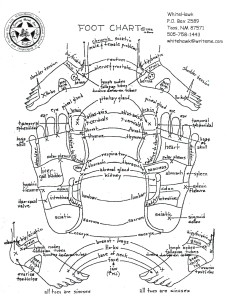
Please meet WhiteHawk.
Reflexology wouldn’t be what it is today without the many charts created by reflexologists over the years.
The charts are, to my mind, all accurate and all wonderful. They vary greatly depending on the abilities, skills, and experience of the reflexologist creating them. When I say this, I mean not only the skills, abilities, and experience of the reflexologist but also the skills, abilities, and experience of the reflexologist as an artist.
Several years ago, I found the work of WhiteHawk. She is not only an accomplished reflexologist but also a wonderful artist. She has a website that shows a few of her gorgeous paintings.
WhiteHawk has a chart. I contacted her and received permission to share this chart with you. As you study it, you’ll notice a few points that are exclusively “WhiteHawk points.” These points are hers alone, as far as my research reveals. These points represent healing places which WhiteHawk has successfully explored in her career.
When you examine/study a new chart for the first time, please take note of any special points. Use them on your client-partners. See how they work for you. Special points on WhiteHawk’s chart include the jaw, hernia point, Ha-Ku point, and shoulder tension.
The WhiteHawk Ha-Ku point is important. It is found on some hand points but never on feet. The Ha-Ku point can also be found on some ear points. I’ve used this point and find that it works in my practice.
And, of course, WhiteHawk’s shoulder tension point can become very important in your practice. I don’t know how it is for your practice, but my client partners have a lot of shoulder tension.
Thanks for reading this blog/book.
Please send a comment.
Please refer this article to your preferred social media.
Thurman Greco
Reflexology chart shared by WhiteHawk.
Spirituality of the Thyroid, a Challenging Issue
The thyroid is a small endocrine gland found at the base of the neck. The spirituality of the thyroid, a challenging issue, is evident because it’s an endocrine gland. The thyroid functions as the “gas pedal” of our bodies, facilitating energy and strength.
More women than men suffer with thyroid issues. They’re difficult to diagnose. The tests are not accurate enough to properly find a mildly troubled thyroid. For some, an untreated thyroid issue is very difficult to live with.
Menopausal women ask spiritual questions as their lives move into a new phase. The spirituality of the thyroid, a challenging issue is “front and center” here.
An underactive thyroid causes depression, weight gain, low energy, hair loss, dry skin, mental dullness, and sleep disorders.
People suffering with thyroid issues seek balance, courage, energy, mental alertness, vitality.
Sometimes an under active thyroid takes what seems like forever to diagnose. If you have thyroid issues and cannot find a solution, don’t give up. A persistent professional healthcare provider can get you to the foundation of the spirituality of the thyroid issue.
You can also try meditation to help cope with the issues of the spirituality of the thyroid. The following short meditation may help you. It’s seeks the wisdom of Mother Mary. She helped me tremendously in my journey for a solution to my thyroid problems.
Find a quiet place where you are safe and will not be disturbed.
Sit quietly and allow Mary, Queen of Angels, to come to you. When you feel her presence, open your eyes, ears, and heart. Her teachings offer compassion, courage, and vitality.
At first, you may feel nothing. However, after a few sessions, you will feel Mary’s presence in some way. She will answer your questions around universal truths.
It’s not necessary to be a Catholic to receive Mary’s teachings. It’s not even necessary to be a Christian. Nor is it necessary to believe in God. Mary’s compassion is open to all.
Mary, Queen of Angels, is an icon of wholeness. We can all seek Mary’s truths when the challenges of the spirituality of the thyroid seem to be overwhelming.
Sit with Mary for short periods several times a week as you seek her wisdom and insight.
Thank you for reading this blog/book.
Please share this article with your preferred social media network.
I hope you found this helpful. Please leave your comments below and check out the other posts.
Don’t forget to join the email list.
Peace and food for all.
Thurman Greco
Michele Garner donated the artwork in this post.




